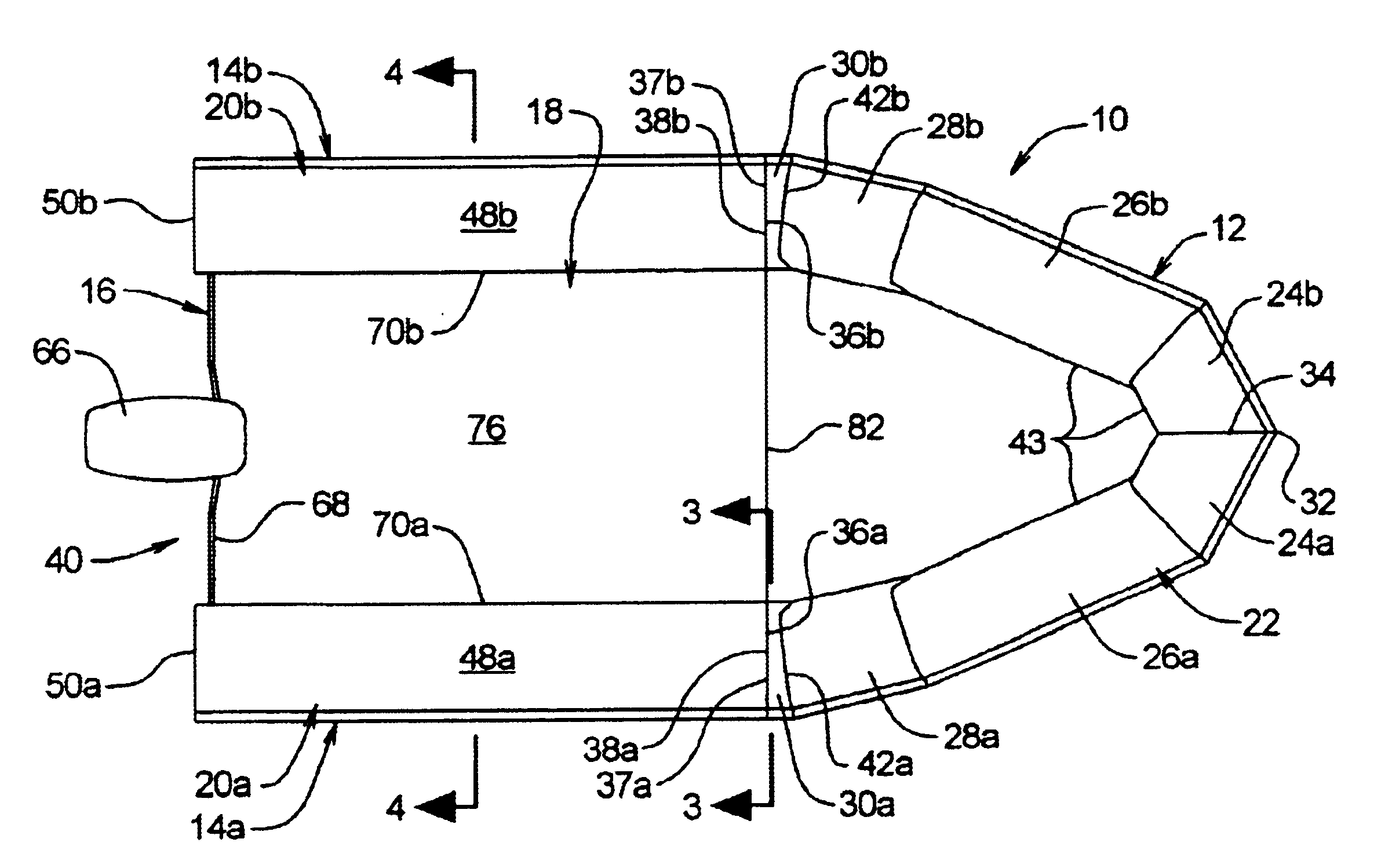Tubular boat having modular construction
a technology of modular construction and tubular boats, which is applied in the field of tubular boats, can solve the problems of high cost of producing a full line of boats which vary in size and configuration, high cost of traditional aluminum models, and labor-intensive processes, and achieve the effect of reducing costs
- Summary
- Abstract
- Description
- Claims
- Application Information
AI Technical Summary
Benefits of technology
Problems solved by technology
Method used
Image
Examples
Embodiment Construction
a. Overview
FIG. 1 shows a top view, and FIG. 2 shows a side view of RHIB-style boat 10 in accordance with the present invention. As can be seen, the boat 10 includes four, interconnected modular assemblies, namely a bow assembly 12, right and left gunwale assemblies 14a,b, a transom unit 16, and a rigid floor / hull unit 18.
The identical bow assembly 12 and transom unit 16 may be used in all boats produced, regardless of length or hull configuration. In the embodiment illustrated in FIGS. 1 and 2, the gunwale assemblies 14a,b each comprise a single gunwale module 20a,b and thus define the limiting minimal length for the modular boat 10. For production of longer boats a lengthened version of the hull assembly 18 may be substituted, with additional gunwales modules connectively butted to the leading modules 20a,b to make up the difference in length. As will be described in greater detail below, the floor / hull unit 18 is then mounted to the bow and gunwale modules at a relatively higher ...
PUM
| Property | Measurement | Unit |
|---|---|---|
| length | aaaaa | aaaaa |
| length | aaaaa | aaaaa |
| height | aaaaa | aaaaa |
Abstract
Description
Claims
Application Information
 Login to View More
Login to View More - R&D
- Intellectual Property
- Life Sciences
- Materials
- Tech Scout
- Unparalleled Data Quality
- Higher Quality Content
- 60% Fewer Hallucinations
Browse by: Latest US Patents, China's latest patents, Technical Efficacy Thesaurus, Application Domain, Technology Topic, Popular Technical Reports.
© 2025 PatSnap. All rights reserved.Legal|Privacy policy|Modern Slavery Act Transparency Statement|Sitemap|About US| Contact US: help@patsnap.com



